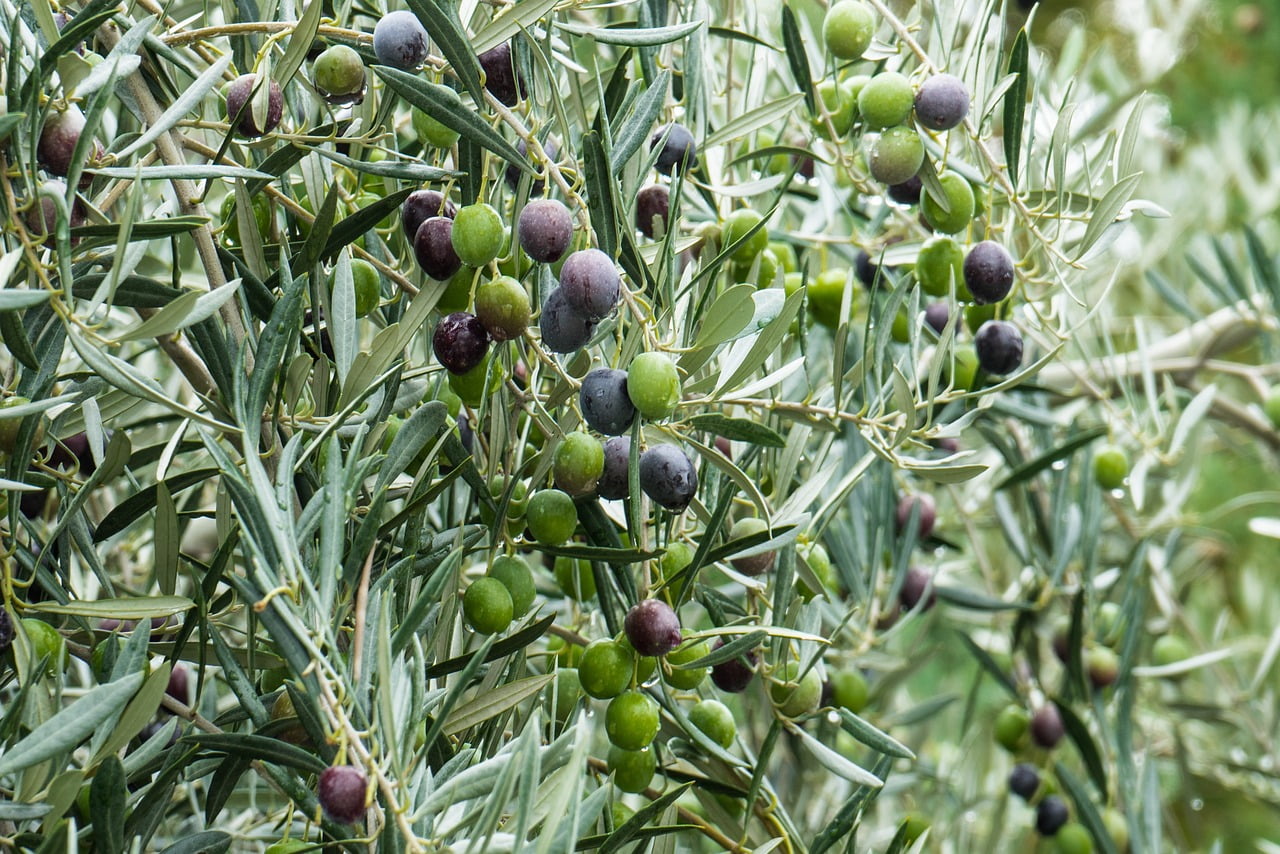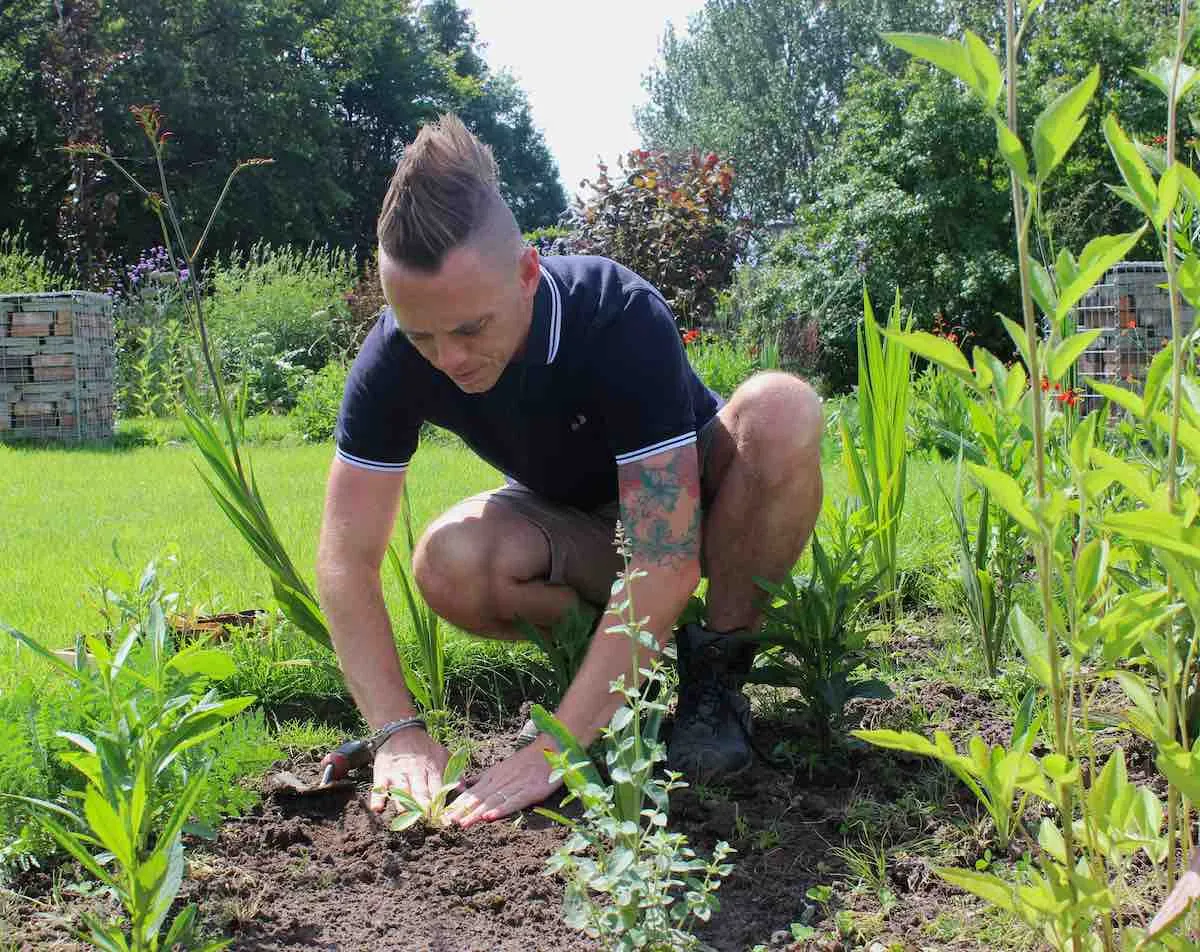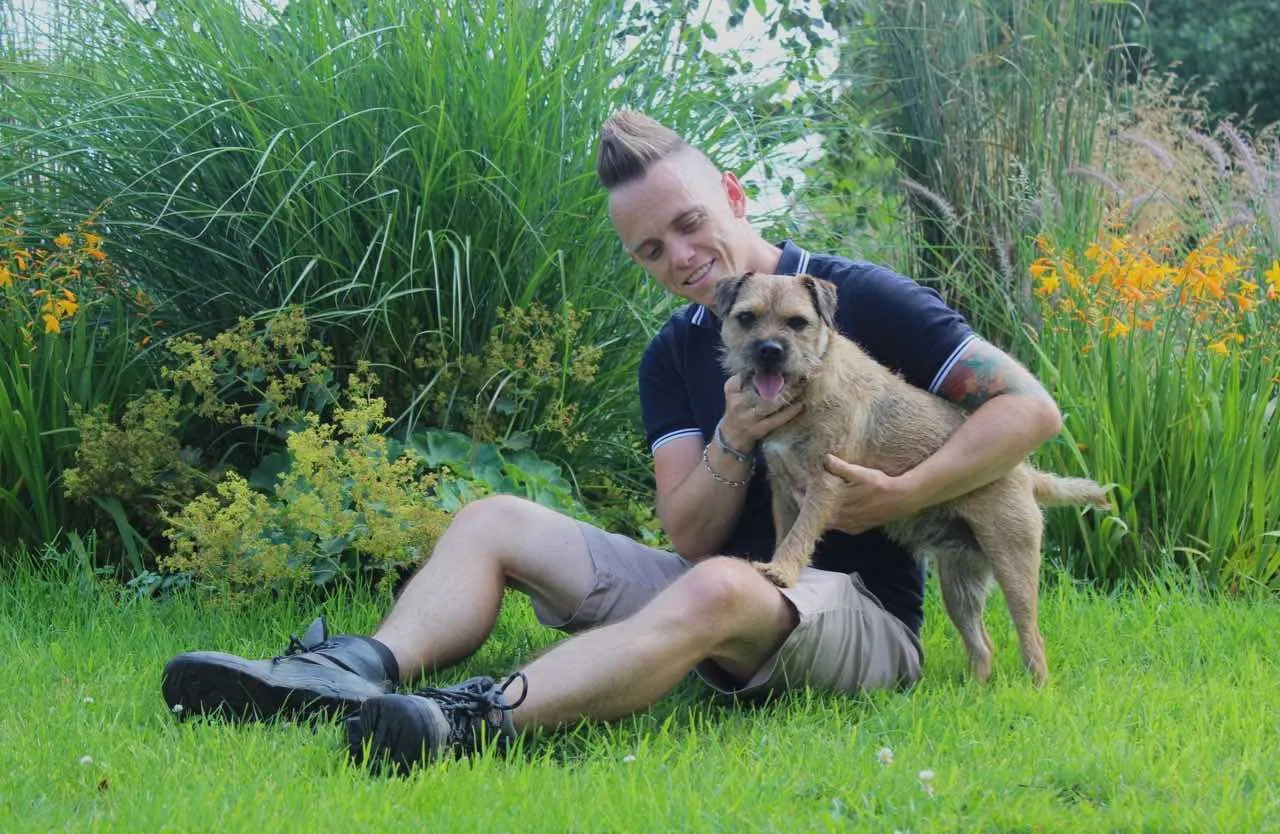Hi @mralphafoxtrot
Good question and not many people experience this issue with Olive trees as they are so hardy, but sadly, your images show a prime example of Peacock spot or Olive scab, a leaf fungus that causes damage and unsightly white spots which sometimes are purple or change colouron olive tree leaves. A healthy olive tree's leaves will look like the ones below.

Olive Scab, commonly known as Peacock Spot, is a prevalent fungal disease impacting olive trees (Olea europaea). Caused by the pathogen Venturia oleaginea, this disease is characterised by distinct foliar lesions that, if left unmanaged, can lead to significant defoliation and subsequent reduction in fruit production and overall tree vigour. However, don't panic, it rarely kills an olive tree but just looks messy.
Let me provide more details for other Garden Ninjas on Peacock spot, its identification on Olive trees, and comprehensive management strategies.
Understanding Olive Scab (Peacock Spot)
Venturia oleaginea is an ascomycete fungus that primarily affects the leaves of olive trees, though severe infections can also extend to twigs and fruit. This fungus travels in wet windy weather and when you've had a very dry spell and then a deluge of rain.
Pathogen Characteristics and Disease Cycle:
- Symptoms: Initial manifestations on leaves include small, dark, circular to irregular spots. These lesions often develop a characteristic ring-shaped appearance or a purplish-brown halo as they mature, leading to the "Peacock Spot" moniker.
- Lesion Progression: Over time, these lesions can coalesce, covering significant portions of the leaf surface. Severely infected leaves exhibit premature senescence and abscission (leaf fall).
- Impact: Extensive defoliation diminishes the tree's photosynthetic capacity, leading to reduced vigour, decreased fruit set, and compromised fruit quality. In severe cases, the tree's overall health can be significantly impaired, making it more susceptible to other biotic and abiotic stresses.
- Environmental Favourability: The pathogen thrives in cool, wet, and humid conditions. Prolonged periods of leaf wetness are critical for spore germination and infection. Optimal temperatures for disease development typically range between 15-20°C (59-68°F).
- Dissemination: Spores (conidia and ascospores) are primarily dispersed by wind and splashing water, facilitating rapid spread within and between olive groves. Which is why drought, then sudden wet weather, sees a sudden outbreak of it!
- Overwintering: The fungus overwinters in infected leaves, whether they remain on the tree or have fallen to the ground. These overwintering structures serve as the primary inoculum source for new infections in the spring. This is why all leaves should be burnt, destroyed, and collected. Not left for leaf mould.
Comprehensive Management Strategies
Effective control of Olive Scab necessitates an eco approach of removing leaves, watering carefully and also ensure your trees are healthy with mulches or liquid feeds after being struck down with the fungus.
1. Cultural Practices (things we as gardeners can do) for Disease Prevention
- Pruning for Air Circulation: Implement strategic pruning to ensure an open canopy structure. This enhances air circulation, reduces leaf wetness duration, and improves light penetration, thereby creating an environment less conducive to fungal proliferation. Remove crossing branches, suckers, and dense internal growth.
- Irrigation Management: Avoid overhead irrigation, especially during periods of high humidity or in the late afternoon/evening. Water at the base of the tree to keep foliage dry. If overhead irrigation is unavoidable, schedule it for early morning to allow leaves to dry quickly.
2. Sanitation and Hygiene
- Removal of Infected Material: Meticulously prune and remove all branches and leaves exhibiting symptoms of infection. This reduces the inoculum load within the tree.
- Disposal of Debris: Rake and collect all fallen infected leaves and other plant debris from beneath the trees. Proper disposal through burning (where permitted) or deep burial is essential to eliminate overwintering spores. Avoid composting infected material unless high-temperature composting methods are guaranteed to kill the pathogen.
- Tool Sterilisation: Always sterilise pruning tools before and after each cut, and between trees, using a disinfecant such as rubbing alcohol or a 10% bleach solution. This prevents the mechanical transmission of spores. I always clean my snips in a bucket with 1 part bleach 4 parts water.
3. Chemical Control (Fungicides):
Fungicide application is typically employed by a lot of gardeners as a preventative measure or to manage severe outbreaks, especially in commercial settings but its really bad for the environment as often it impacts other wildlife, so I never recommend it.
4. Tree Health and Nutrition:
Balanced Fertilisation: Provide a balanced nutritional program to maintain tree vigour. Healthy trees are inherently more resilient to disease. To be honest, I never feed Olives ever. But if mine had leaf scab I would give it a thick peat free compost mulch and then some liquid feed just to perk it up post illness.
Nitrogen Management: Avoid excessive nitrogen fertilisation, as it can promote lush, succulent growth that is more susceptible to fungal infections.
Do let us know how you get on after you've had a good tidy up of the leaves and a feed.
All the best
Lee Garden Ninja
Hi @mralphafoxtrot
Good question and not many people experience this issue with Olive trees as they are so hardy, but sadly, your images show a prime example of Peacock spot or Olive scab, a leaf fungus that causes damage and unsightly white spots which sometimes are purple or change colouron olive tree leaves. A healthy olive tree's leaves will look like the ones below.

Olive Scab, commonly known as Peacock Spot, is a prevalent fungal disease impacting olive trees (Olea europaea). Caused by the pathogen Venturia oleaginea, this disease is characterised by distinct foliar lesions that, if left unmanaged, can lead to significant defoliation and subsequent reduction in fruit production and overall tree vigour. However, don't panic, it rarely kills an olive tree but just looks messy.
Let me provide more details for other Garden Ninjas on Peacock spot, its identification on Olive trees, and comprehensive management strategies.
Understanding Olive Scab (Peacock Spot)
Venturia oleaginea is an ascomycete fungus that primarily affects the leaves of olive trees, though severe infections can also extend to twigs and fruit. This fungus travels in wet windy weather and when you've had a very dry spell and then a deluge of rain.
Pathogen Characteristics and Disease Cycle:
- Symptoms: Initial manifestations on leaves include small, dark, circular to irregular spots. These lesions often develop a characteristic ring-shaped appearance or a purplish-brown halo as they mature, leading to the "Peacock Spot" moniker.
- Lesion Progression: Over time, these lesions can coalesce, covering significant portions of the leaf surface. Severely infected leaves exhibit premature senescence and abscission (leaf fall).
- Impact: Extensive defoliation diminishes the tree's photosynthetic capacity, leading to reduced vigour, decreased fruit set, and compromised fruit quality. In severe cases, the tree's overall health can be significantly impaired, making it more susceptible to other biotic and abiotic stresses.
- Environmental Favourability: The pathogen thrives in cool, wet, and humid conditions. Prolonged periods of leaf wetness are critical for spore germination and infection. Optimal temperatures for disease development typically range between 15-20°C (59-68°F).
- Dissemination: Spores (conidia and ascospores) are primarily dispersed by wind and splashing water, facilitating rapid spread within and between olive groves. Which is why drought, then sudden wet weather, sees a sudden outbreak of it!
- Overwintering: The fungus overwinters in infected leaves, whether they remain on the tree or have fallen to the ground. These overwintering structures serve as the primary inoculum source for new infections in the spring. This is why all leaves should be burnt, destroyed, and collected. Not left for leaf mould.
Comprehensive Management Strategies
Effective control of Olive Scab necessitates an eco approach of removing leaves, watering carefully and also ensure your trees are healthy with mulches or liquid feeds after being struck down with the fungus.
1. Cultural Practices (things we as gardeners can do) for Disease Prevention
- Pruning for Air Circulation: Implement strategic pruning to ensure an open canopy structure. This enhances air circulation, reduces leaf wetness duration, and improves light penetration, thereby creating an environment less conducive to fungal proliferation. Remove crossing branches, suckers, and dense internal growth.
- Irrigation Management: Avoid overhead irrigation, especially during periods of high humidity or in the late afternoon/evening. Water at the base of the tree to keep foliage dry. If overhead irrigation is unavoidable, schedule it for early morning to allow leaves to dry quickly.
2. Sanitation and Hygiene
- Removal of Infected Material: Meticulously prune and remove all branches and leaves exhibiting symptoms of infection. This reduces the inoculum load within the tree.
- Disposal of Debris: Rake and collect all fallen infected leaves and other plant debris from beneath the trees. Proper disposal through burning (where permitted) or deep burial is essential to eliminate overwintering spores. Avoid composting infected material unless high-temperature composting methods are guaranteed to kill the pathogen.
- Tool Sterilisation: Always sterilise pruning tools before and after each cut, and between trees, using a disinfecant such as rubbing alcohol or a 10% bleach solution. This prevents the mechanical transmission of spores. I always clean my snips in a bucket with 1 part bleach 4 parts water.
3. Chemical Control (Fungicides):
Fungicide application is typically employed by a lot of gardeners as a preventative measure or to manage severe outbreaks, especially in commercial settings but its really bad for the environment as often it impacts other wildlife, so I never recommend it.
4. Tree Health and Nutrition:
Balanced Fertilisation: Provide a balanced nutritional program to maintain tree vigour. Healthy trees are inherently more resilient to disease. To be honest, I never feed Olives ever. But if mine had leaf scab I would give it a thick peat free compost mulch and then some liquid feed just to perk it up post illness.
Nitrogen Management: Avoid excessive nitrogen fertilisation, as it can promote lush, succulent growth that is more susceptible to fungal infections.
Do let us know how you get on after you've had a good tidy up of the leaves and a feed.
All the best
Lee Garden Ninja
MrAlphaFoxtrot has reacted to this post.
 Lee Burkhill: Award Winning Designer & BBC 1's Garden Rescue Presenters Official Blog
Lee Burkhill: Award Winning Designer & BBC 1's Garden Rescue Presenters Official Blog



